Do you have a question about the Kenwood KMM-BT332 and is the answer not in the manual?
Identifies the KMM-BT332, KMM-BT270U, KMM-BT232U, and KMR-M332BT models.
Instructions for recording serial number for warranty and service.
Guidance on proper disposal of electrical equipment and batteries.
Warnings regarding modifications and interference compliance with FCC rules.
Declaration of conformity with FCC rules by the supplier.
Cautions related to Innovation, Science and Economic Development Canada regulations.
Compliance with FCC/ISED radiation exposure limits for safe operation.
Terms governing the use, duplication, and distribution of licensed software.
Conditions for transferring the license and prohibitions on reverse engineering.
Rights of Licensor, User limitations, and indemnification clauses.
Third-party liability and user's duty to maintain software confidentiality.
Requirements for software destruction upon termination and copyright protection.
Rules on exporting software and general agreement terms.
Notices regarding software licenses from jansson and CJSON.
License terms for CMP and nanopb software components.
License terms for sha2 and Posix software components.
License terms for Carnegie-Mellon and Martin Birgmeier software.
License terms for T-Kernel, BSD, LFS, and Accordo2 software.
Essential safety and operational guidelines before using the product.
Critical warnings regarding product operation, battery hazards, and driving safety.
Advice on adjusting volume to maintain awareness of surroundings while driving.
Identification of main components on the unit's faceplate.
Instructions for turning the unit on/off and adjusting volume.
Methods for selecting audio sources and changing display information.
Procedures for attaching, detaching, and resetting the unit.
Overview and usage of the included remote control.
Setting the initial display language and disabling the demonstration mode.
Steps to configure the unit's clock and date settings.
Configuring the date format and setting the current date.
Accessing and adjusting various optional settings in STANDBY mode.
Procedures for updating firmware and performing factory resets.
Changing display language and managing marine remote IDs.
How to search for and store radio stations.
Using the remote control for direct station frequency input.
Configuring SEEK MODE, AUTO MEMORY, and other radio features.
Using Traffic Info (TI), Program Type (PTY), and Time Sync features.
How to connect USB mass storage devices for playback.
Procedures for connecting Apple devices via USB or Bluetooth.
Playback, pause, skip, and repeat functions for USB/iPod.
Selecting the music source drive for USB devices.
Searching for music files using the remote control.
Selecting files from folders or lists for playback.
Methods for quickly searching files in USB or iPod sources.
Searching files by first character for iPod sources.
Connecting the SiriusXM tuner and activating the subscription.
Steps to start listening to SiriusXM channels.
Tuning directly to SiriusXM channels using the remote.
Limiting access to mature content channels via pass code.
Switching between channel and replay keymodes.
Using SmartFavorites and automatic song playback start.
Previewing songs on favorite channels or currently tuned channels.
Managing channel lock, codes, edits, and resets.
Connecting and playing audio from an external device via AUX.
Installing and configuring the KENWOOD Remote application.
Configuring the remote app for iOS or Android devices.
Supported Bluetooth profiles, codecs, and microphone connection.
Steps for pairing a Bluetooth device and establishing a connection.
Enabling automatic pairing for connected devices.
How the unit handles incoming phone calls.
Improving call voice quality using MIC GAIN, NR LEVEL, and ECHO CANCEL.
Configuring automatic answering and call handling modes.
Making calls via call history, phonebook, or direct dialing.
Accessing and managing call history and phonebook entries.
Using voice commands to initiate calls.
Using voice recognition for calls and storing contacts.
Configuring device selection, deletion, PIN, reconnection, and auto-pairing.
Initializing settings and performing Bluetooth connectivity tests.
Playing audio from a Bluetooth-enabled device.
Controlling playback of Bluetooth audio sources.
Configuring manual and easy equalizer settings.
Adjusting sound reconstruction, space enhancement, and realizer effects.
Selecting speaker sizes for optimal crossover and frequency response.
Adjusting crossover frequencies for tweeters, front/rear HPF, and subwoofer LPF.
Configuring digital time alignment for speakers.
Setting listening position, distance, gain, and reset for DTA.
Guide to automatically calculating delay times based on speaker distances.
Identifying display zones and controlling illumination dimming.
Changing display colors, brightness, and text scrolling.
Configuring the level meter and clock display options.
Enabling demo mode and selecting preset display colors.
Recommending professional installation for safety and proper function.
Critical warnings regarding power supply, battery disconnection, and short circuits.
Cautions about unit temperature, speaker wiring, and mounting angles.
Steps for mounting the unit in-dash and removing it.
Connecting external accessories like tuners and microphones.
Description of the wiring harness and its connections.
Connecting power wires (ACC, BATT) and speaker wires.
Connecting mute, antenna control, and steering remote wires.
Diagram of output terminals for connecting external amplifiers.
Guide to unit maintenance, firmware updates, and playable files.
Lists compatible iPod/iPhone models and OS versions.
Details on how display information changes for various sources.
Resolving issues with display, unit power, and general operation.
Solutions for poor radio reception and static noise.
Troubleshooting playback order, device errors, and file issues.
Resolving SiriusXM errors like channel lock, subscription, and signal issues.
Resolving issues with device detection, pairing, and connectivity.
Troubleshooting sound interruptions, call quality, and voice recognition.
Detailed technical specifications for FM and AM tuner performance.
Technical details for USB connectivity, file systems, and codecs.
Technical details for audio output power, impedance, and tone controls.
Specifications for operating voltage, dimensions, and weight.
Listing of registered trademarks for software and hardware components.
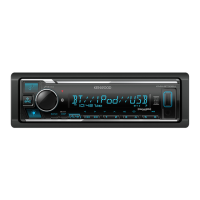
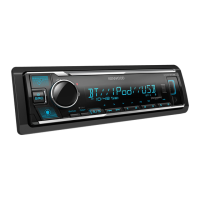
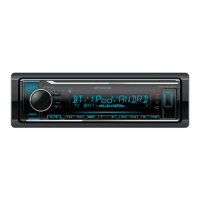
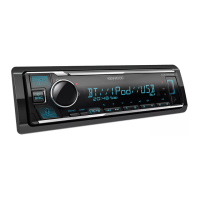
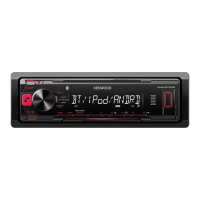



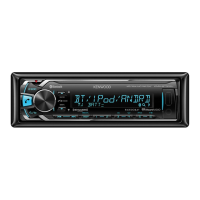

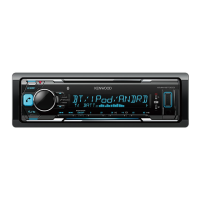
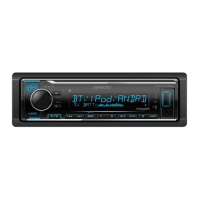
